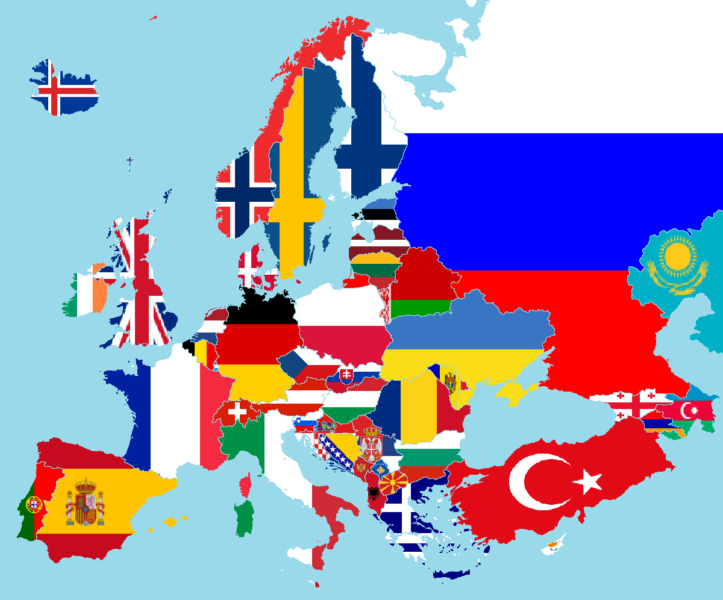 If your business sells internationally, then your search engine optimization (SEO) efforts need to operate around the world, and international SEO can be complicated.
If your business sells internationally, then your search engine optimization (SEO) efforts need to operate around the world, and international SEO can be complicated.
Multiple countries, multiple languages, and often, multiple languages within a given country. It’s easy to get tied up in knots. And even easier to confuse a search engine and create a number of typical SEO issues like duplicate content.
Fortunately, good international SEO is achievable; it just needs a little planning and the right approach for your unique situation.
Let’s look at the various ways you can target international customers and make good decisions when tackling the complex task of ranking in multiple countries.
Ready? Listo? Prêt? Bereit? Let’s dive in.
What is international SEO?
International SEO is the process of organizing and optimizing your webpages to allow search engines to identify the countries you are targeting, the specific content and language for each user in a given location.
In many ways, this is a similar to how we provide SEO for small businesses that target multiple locations, since they often organize by towns, cities, counties or states.
Domain names for international SEO
You may want to consider a few things when choosing a domain name for your international SEO campaigns.
Some domains, known as country code top-level domains (ccTLD), will default to a specific location. Other top-level domains (TLDs) can be geotargeted to point at specific countries. The sub-folders and subdomains on these TLD domains can be geo-targeted to different countries as well.
The main takeaway here is that you must ensure you have the correct domain for your international SEO requirements.
Just to confuse matters, these rules can sometimes be broken, and one such example is when promoting content with SEO. Even ccTLD domains or geotargeted TLD domains can rank informational content internationally.
This is a little contradictory to international SEO thinking, so let me give you an example.
My company operates out of the United Kingdon (UK), but we have customers all around the world. The majority of our customers find us through articles on our blog, which runs on a UK ccTLD. This proves that in the right situation, informational content can still rank internationally from a ccTLD. Go figure!
This is not to say you should disregard geotargeting; for the majority of industries, this is not the right approach. Ranking internationally is about providing the right content for the right audience, often for specific business reasons.
You want to make sure Google does not get utterly confused with the several versions of your site and bury you in the deepest, darkest depths of the search index.

How to target a specific country
The following is a basic checklist for targeting a specific country with international SEO:
- Use a country-specific domain.
- Specify the location you are targeting in Google Search Console.
- Register your business address with Google My Business.
- Include the street address of the business on the website.
- Host the website locally (as much for usability as for SEO).
- Get links from country-specific websites.
- Use local language(s).
What we are trying to do is send a clear signal to Google about where you operate and who this content is for. Multiple signs send a clearer signal, so try to include all items on the checklist.
International SEO strategy
Typically, most international SEO efforts include targeting multiple countries, which means you must scale your approach across all desired locations.
There are a few ways to approach this which may or may not be suitable for your situation. Here are two approaches applicable to the majority of serious international SEO efforts.
- Content marketing. As I mentioned earlier, targeted content marketing can help pages rank internationally, even from a ccTLD site. If you can generate leads through content, then promoting your content with SEO can be the simplest option. As an example, Search Engine Land ranks internationally as a content provider, but so does the informational content of my company, which is based in the UK. This is technically easy, but you must also make sure this is a viable business model for your company. For companies that exist online, this is often a good fit, but for more traditional businesses, this is often not the right way to go about things.
- Single TLD site. In some industries, you will often see automatic international search results. There is a company in Australia that sells safety harnesses. It is a niche business, and without any specific international SEO, they rank pretty well across English-speaking countries such as Australia, the UK and the United States. If they wanted to focus on international SEO, they’d have little trouble doing so; a more traditional SEO process would likely be all they’d need.
The takeaway here is to do your research before you dive into a complex international setup.
3. Subfolders and geotargeting
If you require country-specific content, one of the easiest options is to create localized sub-directories on your own site. These sub-directories can be geotargeted in Google Search Console and can contain country-specific content and language. Here is an example and the pros and cons of each:
- example.com — root site targeting the USA.
- example.com/uk/ — UK.
- example.com/de/ — Germany.
There are three key benefits to this approach. First, you are only expanding your existing site, so there may be less technical management and overhead, e.g., hosting.
Secondly, the sub-directories will inherit authority from the parent domain.
Lastly, you only have one site to promote, so while you will want country- and language-specific links, this is still simpler and more cost-effective than promoting multiple sites.
As for the cons, users may not recognize geotargeting from the universal resource locator (URL), and you will have a single server location. This can be a relatively easy way to get started with true international SEO, but it is important to understand the limitations of this approach.
4. Country-specific domains
This approach can use country-code top-level domains (ccTLDs) or subdomains on a TLD. In a way, they are two slightly different techniques to achieve the same end goal.
- Geo-targeted subdomains. These TLD subdomains will need to be geotargeted in Google Search Console:
- www.example.com — US.
- uk.example.com — UK.
- de.example.com — Germany.
- Country-specific ccTLD domains. These will automatically target the country associated with the ccTLD:
- Amazon.com — US.
- Amazon.co.uk — UK.
- Amazon.de — Germany.
For businesses with a physical presence, operation or local offline marketing in the target country, this is typically the best approach– although not the most cost-effective approach, as each site must be configured and marketed independently, typically by the local marketing team.
Both of these approaches allow the business to use local web hosting and build clear location signals with country-specific links to the URL. These are strong signals and should be considered when making a decision to enter a competitive international market where you may be competing with companies resident in that country.
If you can use ccTLDs here, I tend to favor that approach over subdomains; but it requires you to own all the international ccTLD versions of your domain. Doing this can confer strong branding benefits where users prefer to click on their own ccTLD.
Folks in the UK are used to .co.uk sites, people in France prefer .fr sites and so on. SEO is just part of a larger conversation, so the right approach should be determined by the wants and needs of the target customer.
Conversely, using subdomains is not as popular, as users may not recognize or understand the domain, which could impact trust and click-through rates.
This is the approach favored by the likes of Amazon and eBay. So, if money is no object and you are playing the long game, this is typically the approach we would recommend for international SEO companies.
An important consideration here is that any problems can be multiplied across your entire portfolio of sites. So, you will want to make sure your initial site is technically perfect before you create international sites.
URL variables
There is actually a third option here, which is to use URL variables like country=uk. However, Google’s own page on multiregional and multilingual sites states this is “not recommended.” This option cannot be geotargeted, and if Google advises not to use this approach, it’s sensible to take that advice.
Summary
Hopefully, this provides an overview of the options for international SEO. What is right for you will depend on your objectives, budgets and marketplace and in many cases, combinations of these options.
We also have to consider more advanced multilanguage SEO where we may have a single country we need to target with multiple languages. This adds yet another layer of complexity to international SEO.
The post International SEO and search trends: How does it all work? appeared first on Search Engine Land.
from SEO Rank Video Blog http://ift.tt/2GsPDhT
via IFTTT
No comments:
Post a Comment